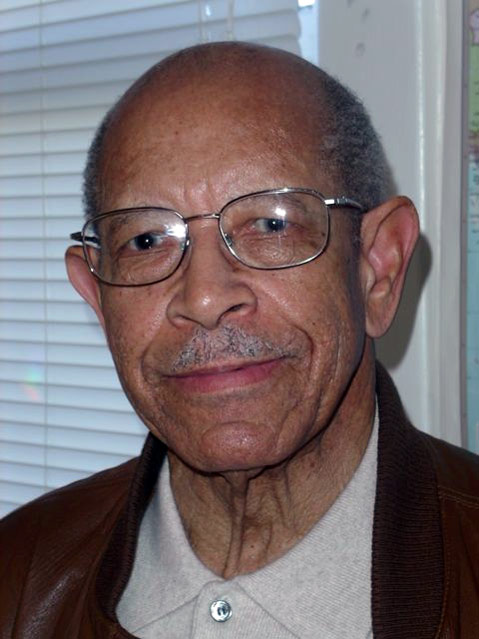Real-Life Red Tails
Lompoc’s Art Hicks Recalls His Tuskegee Airmen Days
“My first solo flight was the most exciting thing I have ever done,” said Art Hicks. “I was about 20 years old in a little yellow plane called a Piper Cub. And to understand where I came from, what I had accomplished, and what hopes I had achieved … oh, it was indescribable.”
The man is not exaggerating –– and his service with the renowned Tuskegee Airmen during World War II doesn’t even begin to tell his story. Born in 1922 in segregated Georgia, Hicks faced the ugly realities of institutionalized racism from childhood. “Even as kids, we understood,” he said, “and in case we didn’t, they reminded us by throwing rocks through the window.”
He learned to live with anger, “but it was anger that had to be subdued,” he said, “and you felt a constant frustration. Once in a while you had to express it, but mostly you kept it inside, and you learned how to survive and how to maintain one’s mentality.”

In 1940, Hicks noticed an advertisement in an Atlanta post office for an aircraft mechanic program run by the federal war training service. He applied, got accepted, and was directed to a school in Memphis. He bought a one-way bus ticket with the earnings from his jobs as a janitor and porter. “But when I got there, I was told, ‘You’re in the wrong place. This is for white boys!’ It was January, and it was cold, and I had used up all my money on bus fare. They said I would have to go to Tuskegee, Alabama.
“The problem was: How do I get there? I didn’t have any money. It was suggested that I go to a traveler’s aid society, and there I was given the address of an elderly couple. Most hotels didn’t lend themselves to black people in those days, especially in the South, so I stayed with this couple and worked as a bus boy to earn the money, and then I went on to Tuskegee. So that’s the start of my education.”
The first African-American aviators in the United States Armed Forces, the Tuskegee Airmen served with distinction during World War II. “Blacks were considered incapable of learning complex material, incapable of flying a plane, incapable of carrying out military missions,” explained Hicks. “But in World War II, the nation was hurting for pilots and other technical types of skills, and it was a chance to convince the War Department and President Roosevelt to open up these opportunities for blacks.”
The first lady played a role in this: “She had heard about this training program and went down to Tuskegee in 1941 and said, ‘I’m gonna ride with one of those pilots.’ The Secret Service almost fell apart. The wife of the president of the United States is gonna get in a plane flown by a Negro pilot! It was unheard of at the time. [Charles Alfred] ‘Chief’ Anderson, held in high regard by all of us, was the pilot, and he gave Mrs. Roosevelt an orientation ride around the area. She came back and said, ‘Well, he flies all right as far as I’m concerned.’
“And sure enough, the program became the beginning of a permanent practice in the military. In World War II our skills were such that in escorting bombers deep into Germany, we never lost a single bomber while they were under our escort.” The record of the Tuskegee Airmen has in fact never been bested, but, in Hicks’s words, “Many black men came back after serving their country only to be refused service at the lunch counters in their own hometowns.”
Hicks has always been small in stature — five and a half feet tall and thin — but he has a big kind of courage and speaks out clearly when he sees unfairness. He served in the military for 28 years, working on airplane maintenance and missile guidance, and he confronted plenty of discrimination, even on the bases, and chose not to remain silent on the subject. He went on to become an educator, human-rights advocate, and a community icon in Lompoc, where he and his wife, Edith Hicks, make their home. He taught for 13 years at Cabrillo High School, earned a master’s degree at Cal Poly San Luis Obispo, and was recently honored with a doctoral degree from Tuskegee University for community service. He has seen two of his grandchildren graduate from Harvard, and in 2009 he traveled to Washington, D.C. to watch the inauguration of the nation’s first African-American president.
Hicks’s life is about redefining what seems possible. “We need to find it within ourselves to contribute to the whole,” he said, “and we can most effectively do that by first making the best possible contribution to our own selves, through education, questioning, and personal growth. Then, stay on the path that leads to your goal. In fact, head for a goal that is so far out of reach you cannot even imagine what it is.”



